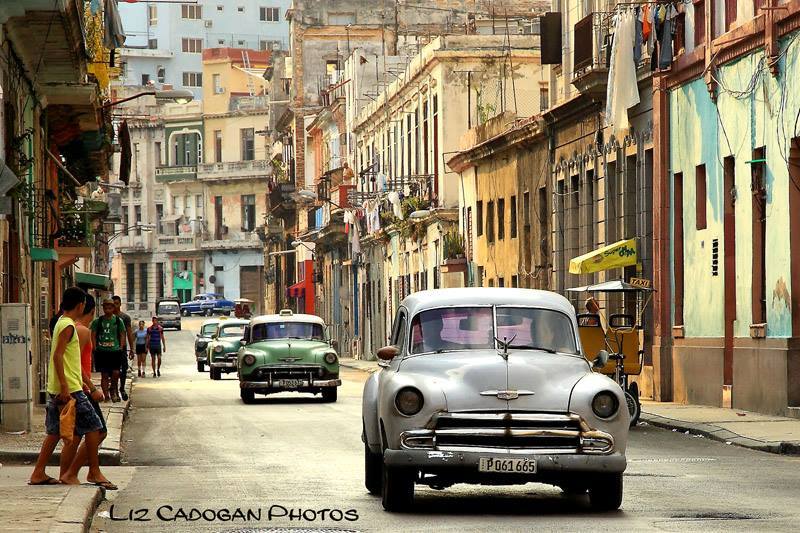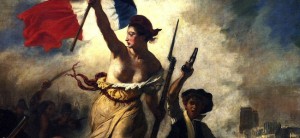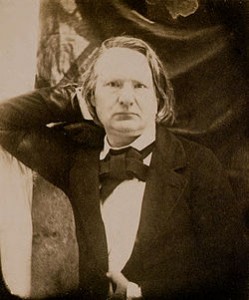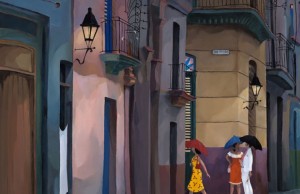Huella francesa en la cultura cubana Caribbean News Digital
CiroBianchiRoss/InternetPhotos/www.thecubanhistory.comTras las huellas francesas en Cuba.THe Cuban History, Hollywood.Arnoldo Varona, Editorla Habana, Cuba. Cuba en Fotos.

TRACING THE FRENCH FOOTSTEPS IN CUBA.
The ideals of “Freedom. Equality and Fraternity “proclaimed by the French Revolution, moved from early revolutionary and anti-colonial movement Numerous island is the group of Cuban independence fighters who finds refuge in France, and so will under the Machado dictatorship. The first sentenced to death for the crime of disloyalty was sent by Joseph Bonaparte to subvert order in the colony.

Since then, and until well into the first half of the twentieth century, Paris, not New York, is the Mecca of the Cuban aristocracy and bourgeoisie. One night at the Tuileries, Napoleon III was shed, dead love, at the foot of the Cuban Serafina Montalvo, III Countess of Fernandina, reputed to be one of the most beautiful Cuban of his time. Marta Abreu and Luis Estévez Romero and die in Paris.
The mansion becomes Rosalia Abreu, by decision of its owner,
MORE PHOTOS OF THE CASA CUBA AT LA SORBONNE UNIVERSITY AT : https://www.google.fr/maps/place/Fondation+ABREU+DE+GRANCHER/
ON THE FACADE WE CAN SEE THE CUBAN SIX PROVINCES BLASONS
La Casa Cuba, for Cuban hostel students studying at the Sorbonne. But many foreign or nationals of France also used the Casa Cuba . la Maison Cuba for it provide many amenities not found in even private homes like showers in each room.
They also have home in Paris Catalina Lasa and her husband Juan Pedro Baró. The Saint John-Perse poet, Nobel Prize for Literature, hold, closer in time, an affair with a young Cuban distinguished, Lilith Sanchez Abreu, to which he dedicated his poem A foreign.
In the Paris residence of the Cuban María de las Mercedes Santa Cruz y Montalvo, Countess of Merlin, who was loving, it is said, of Prince Jerome Bonaparte, alternating Victor Hugo, Lamartine and Musset. Paris is the setting for the great initial success of José Claudio Brindis de Salas, the black Paganini, as it was called, and there another Cuban, José White, author of La bella cubana, come to replace Jean Alard Delphine in his chair at the Paris Conservatoire. Modern painting begins in Cuba after the Parisian stay of Víctor Manuel, Alejo Carpentier and surreal stories written in French until you feel the urgent need to express what American in his work.
 VICTOR HUGO IN 1853
VICTOR HUGO IN 1853
Bums will dawn in Paris painter Carlos Enríquez and poet Felix Pita Rodriguez before he was a legion of Cuban writers and artists who dazzle with Sartre and his pages on intellectual commitment, are sympathetic to the Algerian war of liberation and get excited about the cinema of the New Wave.
In the Paris residence of the Cuban María de las Mercedes Santa Cruz y Montalvo, Countess of Merlin, who was loving, it is said, of Prince Jerome Bonaparte, alternating Victor Hugo, Lamartine and Musset. Paris is the setting for the great initial success of José Claudio Brindis de Salas, the black Paganini, as it was called, and there another Cuban, José White, author of La bella cubana, come to replace Jean Alard Delphine in his chair at the Paris Conservatoire. Modern painting begins in Cuba after the Parisian stay of Víctor Manuel, Alejo Carpentier and surreal stories written in French until you feel the urgent need to express what American in his work.
 VICTOR HUGO IN 1853
VICTOR HUGO IN 1853Bums will dawn in Paris painter Carlos Enríquez and poet Felix Pita Rodriguez before he was a legion of Cuban writers and artists who dazzle with Sartre and his pages on intellectual commitment, are sympathetic to the Algerian war of liberation and get excited about the cinema of the New Wave.
MORE PHOTOS OF THE CASA CUBA AT LA SORBONNE AT : https://www.google.fr/maps/place/Fondation+ABREU+DE+GRANCHER/
THE FRENCH IN HABANA.
San Isidro Quarters, Habana.
THE FRENCH IN HABANA.


 19th century French coffee plantationSantiago de Cuba
19th century French coffee plantationSantiago de Cuba El Tivolí neighborhoodSantiago de Cuba
El Tivolí neighborhoodSantiago de Cuba El Tivolí neighborhoodSantiago de Cuba
El Tivolí neighborhoodSantiago de Cuba El Tivolí neighborhoodSantiago de Cuba
El Tivolí neighborhoodSantiago de Cuba Loma de los DesamparadosSantiago de Cuba
Loma de los DesamparadosSantiago de Cuba French house room, 19th centurySantiago de Cuba
French house room, 19th centurySantiago de Cuba Museum of the Clandestine Struggle Santiago de Cuba
Museum of the Clandestine Struggle Santiago de Cuba 19th century French coffee plantationSantiago de Cuba
19th century French coffee plantationSantiago de Cuba












 White-wearing Democrat women sat seething in suffrage at President Donald Trump’s 3rd State of the Union address (SOTU) last night, eagerly awaiting the moment they’d see House Speaker Nancy Pelosi tear up a copy of the president’s speech in defiant rage.
White-wearing Democrat women sat seething in suffrage at President Donald Trump’s 3rd State of the Union address (SOTU) last night, eagerly awaiting the moment they’d see House Speaker Nancy Pelosi tear up a copy of the president’s speech in defiant rage. PLO leader Mahmoud Abbas’s dismissive response to President Trump’s peace plan spells the end of the road for the PLO as Israel’s Arab partner to negotiate an end to the 100 years unresolved conflict between Jews and Arabs.
PLO leader Mahmoud Abbas’s dismissive response to President Trump’s peace plan spells the end of the road for the PLO as Israel’s Arab partner to negotiate an end to the 100 years unresolved conflict between Jews and Arabs. Canada was one of the last major countries to make arrangements to bring its citizens back from China. The government also delayed making the decision that those returning from China be quarantined. There is a simple explanation for why it took so long for the Canadian government to act. It’s not a big deal. Since the outbreak of the Coronavirus the major concern of the politically correct politicians has not been the health of their citizens but racism. That’s right, racism.
Canada was one of the last major countries to make arrangements to bring its citizens back from China. The government also delayed making the decision that those returning from China be quarantined. There is a simple explanation for why it took so long for the Canadian government to act. It’s not a big deal. Since the outbreak of the Coronavirus the major concern of the politically correct politicians has not been the health of their citizens but racism. That’s right, racism. To force unconstitutional gun control measures on a wary public, Virginia Gov. Ralph Northam and the Democrat machine in Richmond recently tried to depict law-abiding gun owners as terrorists, racists, and lunatics.
To force unconstitutional gun control measures on a wary public, Virginia Gov. Ralph Northam and the Democrat machine in Richmond recently tried to depict law-abiding gun owners as terrorists, racists, and lunatics. How typical of talk show radio giant Rush Limbaugh to pass a torch our way to see us through the dark tunnel the ‘Progressives’ have left us in when announcing that he’s been diagnosed with “advanced lung cancer”.
How typical of talk show radio giant Rush Limbaugh to pass a torch our way to see us through the dark tunnel the ‘Progressives’ have left us in when announcing that he’s been diagnosed with “advanced lung cancer”. Democrat Senator Elizabeth Warren’s obnoxious question, slamming the legitimacy of John Roberts, the Chief Justice of the Supreme Court, who was presiding over this Senate impeachment trial, was one of the pivotal moments in the Senate impeachment hearing. Warren’s totally inappropriate question turned the tide on the issue of additional witnesses, the only outstanding question, during the entire farce of the Senate impeachment trial against President Trump.
Democrat Senator Elizabeth Warren’s obnoxious question, slamming the legitimacy of John Roberts, the Chief Justice of the Supreme Court, who was presiding over this Senate impeachment trial, was one of the pivotal moments in the Senate impeachment hearing. Warren’s totally inappropriate question turned the tide on the issue of additional witnesses, the only outstanding question, during the entire farce of the Senate impeachment trial against President Trump. There used to be a cliché, “Don’t believe everything you read.” It was meant to make people question the veracity (a word that means “truth” that is much too difficult to be taught in schools anymore) of the articles and writers thereof, that appeared in newspapers, and occasionally in books. It was great advice, but clearly has been forgotten by many in our Electronic Age.
There used to be a cliché, “Don’t believe everything you read.” It was meant to make people question the veracity (a word that means “truth” that is much too difficult to be taught in schools anymore) of the articles and writers thereof, that appeared in newspapers, and occasionally in books. It was great advice, but clearly has been forgotten by many in our Electronic Age. The entire Democrat agenda to remove President Donald Trump from office is based on a ruse.
The entire Democrat agenda to remove President Donald Trump from office is based on a ruse. Two principles in law nullify, make voidable, and void, a defective and unconstitutional impeachment.
Two principles in law nullify, make voidable, and void, a defective and unconstitutional impeachment.

